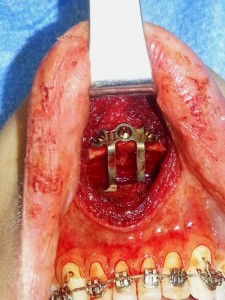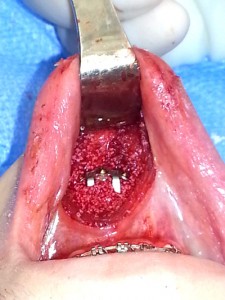A sliding genioplasty is a well known method of chin augmentation. It is often compared to a chin implant when considering aesthetic changes to the chin as a more natural alternative. But the reality is that its indications for use are somewhat different than an onlay bony augmentation. It is often only used when the amount of chin augmentation is considerable, certain dimensional chin changes are needed (vertical lengthening, width narrowing) or some functional improvement is desired. (e.g., lower lip incompetence, mentalis muscle hyperactivity, sleep apnea)

The step-off in a sliding genioplasty can be more than an anatomic observation. This bony area provides support to the overlying upper soft tissue chin pad and part of the labiomental fold or labiomental sulcus. While it does not provide exclusive support to the labiomental fold, a significant bony step-off from a sliding genioplasty can make it deeper or more indented.
Filling in the sliding genioplasty step-off can be a useful aesthetic maneuver to help make for a more natural chin shape. Numerous alloplastic materials have been advocated for this induced bony contour defect from silicone and Medpor implants to even bone grafts. But getting a good adaptation and adequate fill can be challenging not to mention the alloplastic nature of some of these graft choices.

While not every bony genioplasty step-off needs to be filled in or augmented, large chin movements can prevent adverse overlying soft tissue effects.
Dr. Barry Eppley
Indianapolis, Indiana


